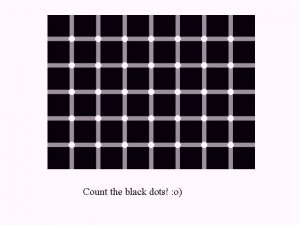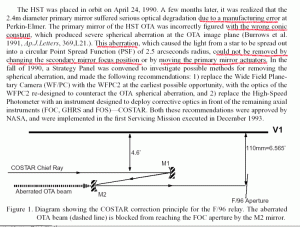- Joined
- Sep 3, 2000
- Messages
- 6,695
Here is the pertinent message to ImaGem from Sergey from an older thread. I think what ImaGem has replied in the body of this message will be of broad interest to forum readers and experts.
"Direct measurement of LIGHT from a diamond” is not the synonym of measurement without mistakes. BS and Imagem are direct measurement tools. Are results the same?Direct measurement is decreasing one type error and increasing other type error.• Operating characteristics of camera are far away from operating characteristics human eye.• Stereo vision• Very limited set of light condition • Start position of diamond
Dave; please send answer to my remarks. Several times I showed to you these problems but never received any answer from you or Imagem.Sergey Sivovolenko CEO OctoNus"
xxxxxxxxxxxxxxxxxxxxxxxxxxxxxxxxxxxxxxxxxxxxxxxxxxxxxxxxxxxxxxxxxxxResponse to the above from ImaGem:
The scope of a methodology defines the types of problems for which it is appropriate and the inferences that can be drawn from it. Ray tracing methodology has proven valuable in modeling optical systems, especially systems in which optical material is homogeneous. Once designed, performance of optical systems is evaluated by direct measurement. In this regard, ray-tracing methodology is a predictive and a modeling tool and not a measuring tool. Improper use of ray tracing methodology is perhaps best illustrated by our experience with the Hubble telescope. Ray tracing methodology was used to design Hubble telescope. NASA built it under the strictest possible standards at a cost of over a billion dollars. But, in actual use in space, the system gave blurred images rather than crisp and clear images expected from the telescope. A very costly mistake indeed. If direct measurements had been taken under viewing conditions, this mistake could have been avoided. The error was extremely small, far less than the accuracy of all diamond measuring devices, but the effect was devastating to NASA.
We are now evaluating and discussing different systems to assess the appearance of a diamond through its light performance. It is anybody''s guess which system will have market acceptance. Nevertheless, we need to ask ourselves is a system capable of doing what it purports to do?
Asserting that a predictive modeling system is a measurement device, as some are saying, has no basis in science and does disservice to the industry. ImaGem measures light performance in a diamond directly. Methodologically, it is the right approach to claim that measurements are taken. The next question is do these direct measurements help us describe how viewers rate various diamonds? There is extensive body of scientific literature that explains how this can be done in general. Observational data are collected and statistical analysis is used to evaluate the efficacy of a set of direct measurements in discriminating between different classes.
This approach is taken by ImaGem to establish that our measures, (Brilliance, Sparkle, and Intensity) do indeed help us discriminate between diamonds whose appearance varies between Excellent to Commercial. ImaGem''s direct measurements also have strong basis in our understanding of human perception. The direct measurement approach developed by ImaGem takes in to account the body color, molecular structure, inclusions, as well as all subtleties in the way a diamond has been cut and polished. ImaGem''s direct measurement approach is also valid for different shapes, sizes and cuts of a diamond. While we must support a healthy debate on how best we can serve the consumer by informing him/her about the appearance of a diamond, we must also be wary of obfuscation.
We must be wary of fallacious arguments thinly veiled in a vain attempt to be scientific. ImaGem is open to anyone to send stones to AGA to independently evaluate the validity and effectiveness of the direct measurement approach developed by ImaGem to discriminate between various quality stones. In addition to round brilliants, ImaGem has developed light appearance grades for princess and marquise cuts and will work with others in the industry that wish to develop direct measurement for standard cuts or branded cuts. We are seeing increasing number of buyers and sellers accepting ImaGem''s approach because it is helping them make better buying and selling decisions. We believe that once the dust is settled, a direct measurement approach to light performance will become the industry standard.
ImaGem
xxxxxxxxxxxxxxxxxxxxxxxxxxxxxxxxxxxxxxx
Sergey and all;
The invitation to send diamonds for testing an evaluation of the process is indeed open to anyone in the trade who is interested. The first diamond will be done for free and then further stones at a fixed rate for research reasons. Only the strength of your wallet limits the amount of testing you might wish to do.
You did ask if the BrillianceScope give the same results as ImaGem. It is my understanding that the answer should be “NO”. The results are not the same because there is something wrong with the Gemex approach. ImaGem believes they have the right methodology. I hope this provides a meaningful response.
I have often said that regardless of the number of parameters one throws into the pot, one could never calculate the weight of a diamond better than placing it on an accurate scale. Arguments made that adding more parameters to tighten up the results are “bad science” so I have been told several times by many different qualified people. I tend to think that there is a limit to how much and how well one may measure and then how well one can predict when compared to just a relatively simple direct measurement.
I think the the following paragraph below from ImaGem''s response is primary:
''While we must support a healthy debate on how best we can serve the consumer by informing him/her about the appearance of a diamond, we must also be wary of obfuscation. We must be wary of fallacious arguments thinly veiled in a vain attempt to be scientific."
xxxxxxxxxxxxxxxxxxxxx
Any thoughts?
"Direct measurement of LIGHT from a diamond” is not the synonym of measurement without mistakes. BS and Imagem are direct measurement tools. Are results the same?Direct measurement is decreasing one type error and increasing other type error.• Operating characteristics of camera are far away from operating characteristics human eye.• Stereo vision• Very limited set of light condition • Start position of diamond
Dave; please send answer to my remarks. Several times I showed to you these problems but never received any answer from you or Imagem.Sergey Sivovolenko CEO OctoNus"
xxxxxxxxxxxxxxxxxxxxxxxxxxxxxxxxxxxxxxxxxxxxxxxxxxxxxxxxxxxxxxxxxxxResponse to the above from ImaGem:
The scope of a methodology defines the types of problems for which it is appropriate and the inferences that can be drawn from it. Ray tracing methodology has proven valuable in modeling optical systems, especially systems in which optical material is homogeneous. Once designed, performance of optical systems is evaluated by direct measurement. In this regard, ray-tracing methodology is a predictive and a modeling tool and not a measuring tool. Improper use of ray tracing methodology is perhaps best illustrated by our experience with the Hubble telescope. Ray tracing methodology was used to design Hubble telescope. NASA built it under the strictest possible standards at a cost of over a billion dollars. But, in actual use in space, the system gave blurred images rather than crisp and clear images expected from the telescope. A very costly mistake indeed. If direct measurements had been taken under viewing conditions, this mistake could have been avoided. The error was extremely small, far less than the accuracy of all diamond measuring devices, but the effect was devastating to NASA.
We are now evaluating and discussing different systems to assess the appearance of a diamond through its light performance. It is anybody''s guess which system will have market acceptance. Nevertheless, we need to ask ourselves is a system capable of doing what it purports to do?
Asserting that a predictive modeling system is a measurement device, as some are saying, has no basis in science and does disservice to the industry. ImaGem measures light performance in a diamond directly. Methodologically, it is the right approach to claim that measurements are taken. The next question is do these direct measurements help us describe how viewers rate various diamonds? There is extensive body of scientific literature that explains how this can be done in general. Observational data are collected and statistical analysis is used to evaluate the efficacy of a set of direct measurements in discriminating between different classes.
This approach is taken by ImaGem to establish that our measures, (Brilliance, Sparkle, and Intensity) do indeed help us discriminate between diamonds whose appearance varies between Excellent to Commercial. ImaGem''s direct measurements also have strong basis in our understanding of human perception. The direct measurement approach developed by ImaGem takes in to account the body color, molecular structure, inclusions, as well as all subtleties in the way a diamond has been cut and polished. ImaGem''s direct measurement approach is also valid for different shapes, sizes and cuts of a diamond. While we must support a healthy debate on how best we can serve the consumer by informing him/her about the appearance of a diamond, we must also be wary of obfuscation.
We must be wary of fallacious arguments thinly veiled in a vain attempt to be scientific. ImaGem is open to anyone to send stones to AGA to independently evaluate the validity and effectiveness of the direct measurement approach developed by ImaGem to discriminate between various quality stones. In addition to round brilliants, ImaGem has developed light appearance grades for princess and marquise cuts and will work with others in the industry that wish to develop direct measurement for standard cuts or branded cuts. We are seeing increasing number of buyers and sellers accepting ImaGem''s approach because it is helping them make better buying and selling decisions. We believe that once the dust is settled, a direct measurement approach to light performance will become the industry standard.
ImaGem
xxxxxxxxxxxxxxxxxxxxxxxxxxxxxxxxxxxxxxx
Sergey and all;
The invitation to send diamonds for testing an evaluation of the process is indeed open to anyone in the trade who is interested. The first diamond will be done for free and then further stones at a fixed rate for research reasons. Only the strength of your wallet limits the amount of testing you might wish to do.
You did ask if the BrillianceScope give the same results as ImaGem. It is my understanding that the answer should be “NO”. The results are not the same because there is something wrong with the Gemex approach. ImaGem believes they have the right methodology. I hope this provides a meaningful response.
I have often said that regardless of the number of parameters one throws into the pot, one could never calculate the weight of a diamond better than placing it on an accurate scale. Arguments made that adding more parameters to tighten up the results are “bad science” so I have been told several times by many different qualified people. I tend to think that there is a limit to how much and how well one may measure and then how well one can predict when compared to just a relatively simple direct measurement.
I think the the following paragraph below from ImaGem''s response is primary:
''While we must support a healthy debate on how best we can serve the consumer by informing him/her about the appearance of a diamond, we must also be wary of obfuscation. We must be wary of fallacious arguments thinly veiled in a vain attempt to be scientific."
xxxxxxxxxxxxxxxxxxxxx
Any thoughts?







300x240.png)